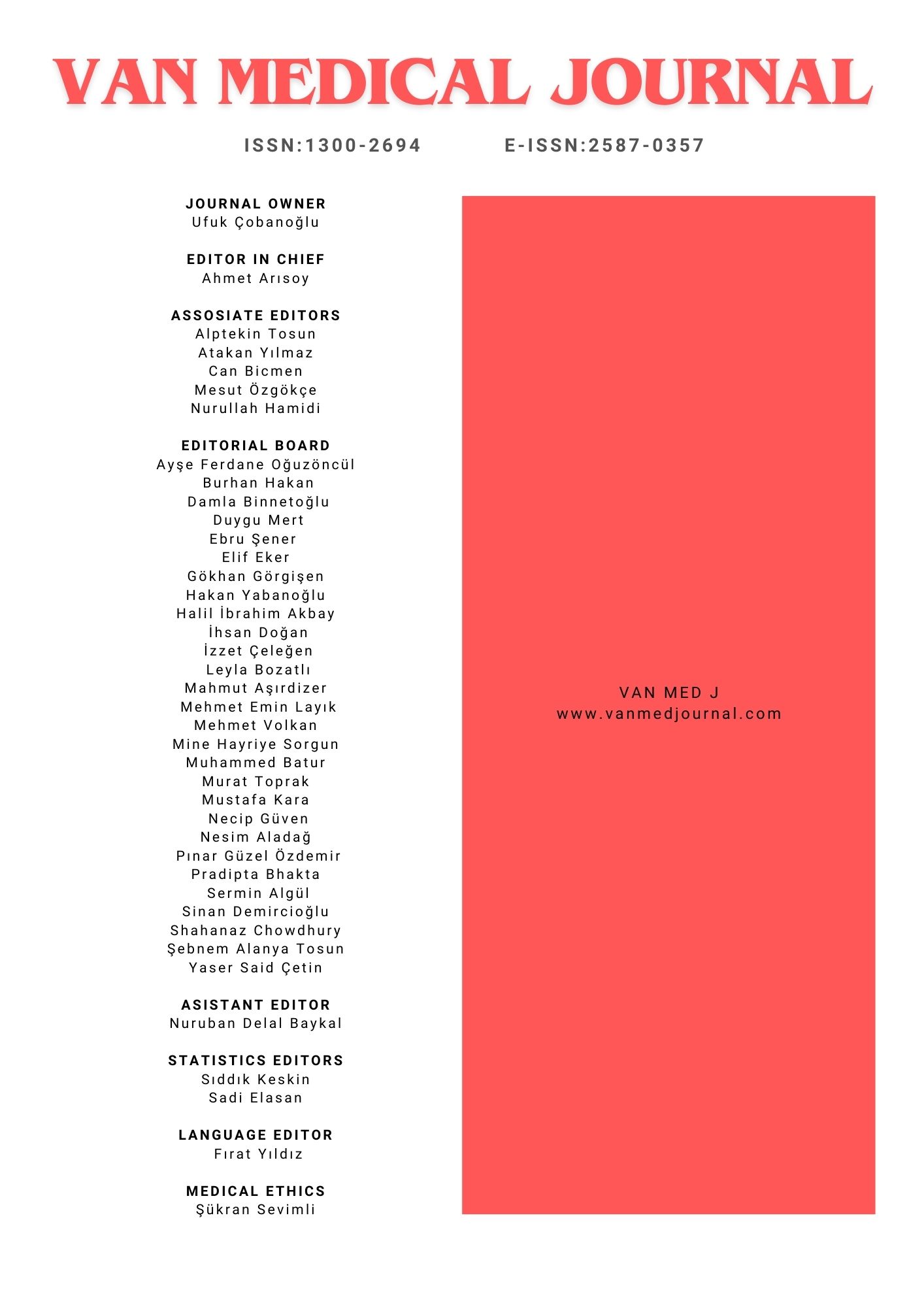Prevalence and Risk Factors of Obesity among Married Women Living in Squatter Neighborhood
Hatice Balcı Yangın1, Hınçal Sevi21Akdeniz Üniversitesi Antalya Sağlık Yüksekokulu, Antalya, Türkiye2Akdeniz Üniversitesi Hastanesi, Diyet Polikliniği, Antalya, Türkiye
Objectives: This study was conducted to prevalence and risk factors of obesity among married women living in squatter neighborhood Material and Methods: This descriptive study was made in June 2007 on 130 married women living around the region of the health center No. 33, featured a slum area. The methods used in the evaluation of data obtained from the study were correlation, regression and chi-square test. All of the married women were asked to participate to our study, but 130 women accepted to take part in the questionnarie. Statistical analyses were undertaken using SPSS version 13. Descriptive analysis, correlation, regression and Chi-square (?²) test were used for statistical evaluation. Results: The mean age of these women in this study is 35.95 ± 9465. It was found out that 38.5% of the women in this study were in age group of 26 and 35, income of 58.5% of them was less than their expense, 82.3% of them were primary school graduate, 22.3% had a chronic disease and 15.4% used drug continuously and 48.5% fed two times per day. It was discovered that the mean BMI value of these women was 28.15 ± 5.401 and 31.5% of them had a BMI value 30 and over and the mean waist circumference value was 86.78 ± 12.911 cm and 43.8% of them had an obese waist circumference value higher than 88 cm. It was figured out that there was a positive significant relationship between these women’s age, waist circumference value, pregnancy, birth, living children, people living in the house and the number of meals taken (r=0,449 p=0.000, r=0.708 p=0.000, r=0.352 p=0.000, r= 0.349 p=0.000, r=0.355 p=0.000, r=0.215 p=0.0014, r=0.173 p=0.049 respectively). It was found out that there was a significant relationship between body mass index and chronic illness and continues drug use (X2 =8.131, p= 0.006, X2 =11.547, p= 0.001 respectively). Conclusion: In our study, the obesity has emerged as a major problem in the women in reproductive age group, living in the slum area.
Keywords: Body mass index, obesity, women, waist circumferenceGecekondu Bölgesinde Yaşayan Evli Kadınlarda Şişmanlık Sıklığı ve Etki Eden Faktörler
Hatice Balcı Yangın1, Hınçal Sevi21Akdeniz Üniversitesi Antalya Sağlık Yüksekokulu, Antalya2Akdeniz Üniversitesi Hastanesi, Diyet Polikliniği, Antalya
Amaç: Bu çalışma; gecekondu bölgesinde yaşayan evli kadınlarda şişmanlık sıklığı ve etki eden faktörlerin belirlenmesi amacıyla yapılmıştır. Gereç ve Yöntem: Tanımlayıcı tipte olan bu çalışma, Antalya il merkezinde kırsal alan özelliği taşıyan 33 nolu sağlık ocağı bölgesinde yaşayan 130 evli kadın ile Haziran 2007’de yapılmıştır. Araştırmada örneklem seçimine gidilmeyerek evli kadınların tamamı çalışma kapsamına alınmak istenmiş, ancak araştırmaya katılmayı kabul eden 130 kadınla ile çalışılmıştır. Verilerin değerlendirilmesinde; SPSS for Windows 13.0 programında yüzdelik, korelasyon, regresyon ve ki-kare testi kullanılmıştır. Bulgular: Bu çalışmada kadınların yaş ortalamaları 35.95± 9.47’dir. Kadınların % 38.5’i 26-35 yaş grubunda, %58.5’inin gelirinin giderden az olduğu, %82.3’ü ilköğretim mezunu, %22.3’ünde kronik hastalık olduğu ve %15.4’ünün sürekli kullandığı ilacının olduğu, % 48.5’nin günde iki öğün beslendiği saptanmıştır. Kadınların BKI ortalamaları 28,15± 5,40 ve %31.5’ inin 30 ve üzerinde BKİ sahip olduğu, bel çevresi ortalamalarını ise, 86,78±12,91 cm olduğu ve %43.8’inin 88 cm‘den büyük şişman bel çevresine sahip olduğu belirlenmiştir. Kadınların yaş, bel çevresi, gebelik, doğum, yaşayan çocuk, evde yaşayan kişi,ve öğün sayısı ile Beden Kitle İndeksi arasında pozitif yönde anlamlı bir ilişki olduğu saptanmıştır (r=0.449 p=0.000, r=0.708 p=0.000, r=0.352 p=0.000, r= 0.349 p=0.000, r=0.355 p=0.000, r=0.215 p=0.0014, r=0.173 p=0.049 sırası ile). Beden kitle indeksi ile kronik hastalığa sahip olma ve sürekli ilaç kullanma arasında anlamlı bir ilişki olduğu bulunmuştur (X2 =8.131, p= 0.006, X2 =11.547, p= 0.001 sırasıyla). Sonuç: Çalışmada, gecekondu bölgedeki doğurgan çağ kadınlarında şişmanlık önemli bir sorun olarak karşımıza çıkmıştır.
Anahtar Kelimeler: Beden kitle indeksi, bel çevresi, kadın, obeziteManuscript Language: Turkish

